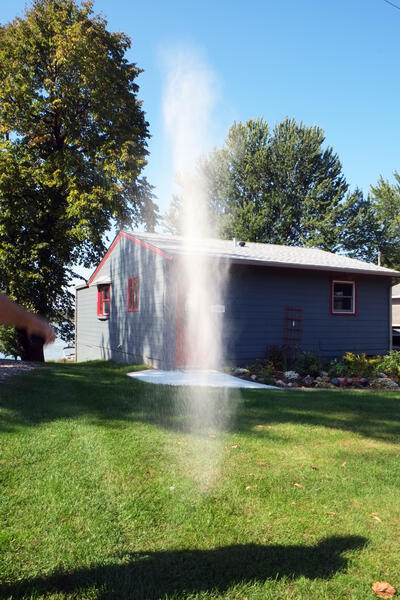About Lynn
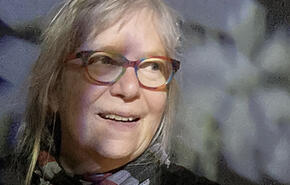
Following graduation with a BFA in photography, Lynn moved to Australia in 1975. She fell in love with the country’s vast inland desert landscape. After spending all her life in an urban environment, it was a challenge to depict a space extending over thousands of miles that defied traditional pictorial conventions. Photographs of this landscape was the subject of her first one-person exhibition, Horizons (1981), at the National Gallery… more
Jump to a project:
Still...Life (Part 3)
The Czech Republic is one of the richest countries with regard to Jewish sites and artifacts. Spared from major bombing during World War II, Prague and the surrounding countryside contain over three hundred buildings and burial sites, and represent the largest vestige of Jewish culture and heritage found in Central and Eastern Europe.
Neil Anderson, an Associate Professor in Horticultural Science at the University of Minnesota, and I met as Fulbright Scholars in the Czech Republic during 2010. Together with Neil’s husband, Mark Gilquist, we set out to explore a number of cemeteries during 2010-2011 (and later, just Lynn and Neil in 2015), each with their own particular agenda.
While Neil recorded the native, non-native and/or invasive plant species thriving in the cemeteries, I explored the periphery of these sites. The ubiquitous stone wall covered in ivy is a common feature that indicates the presence of a Jewish burial ground. What particularly struck me were the details of the environment found next to these walls including trees and fields, adjacent buildings, fences, signs, and roads.
The individual photographs should be viewed as part of a larger work. Coursing through the towns and countryside, the presence of these cemetery walls serves as a historical marker in the surrounding landscape.
In addition to my photographs, the exhibition also includes live plants and bulbs, Neil’s documentation of plant species, and several of Mark’s iPhone images.
Neil Anderson, an Associate Professor in Horticultural Science at the University of Minnesota, and I met as Fulbright Scholars in the Czech Republic during 2010. Together with Neil’s husband, Mark Gilquist, we set out to explore a number of cemeteries during 2010-2011 (and later, just Lynn and Neil in 2015), each with their own particular agenda.
While Neil recorded the native, non-native and/or invasive plant species thriving in the cemeteries, I explored the periphery of these sites. The ubiquitous stone wall covered in ivy is a common feature that indicates the presence of a Jewish burial ground. What particularly struck me were the details of the environment found next to these walls including trees and fields, adjacent buildings, fences, signs, and roads.
The individual photographs should be viewed as part of a larger work. Coursing through the towns and countryside, the presence of these cemetery walls serves as a historical marker in the surrounding landscape.
In addition to my photographs, the exhibition also includes live plants and bulbs, Neil’s documentation of plant species, and several of Mark’s iPhone images.
-
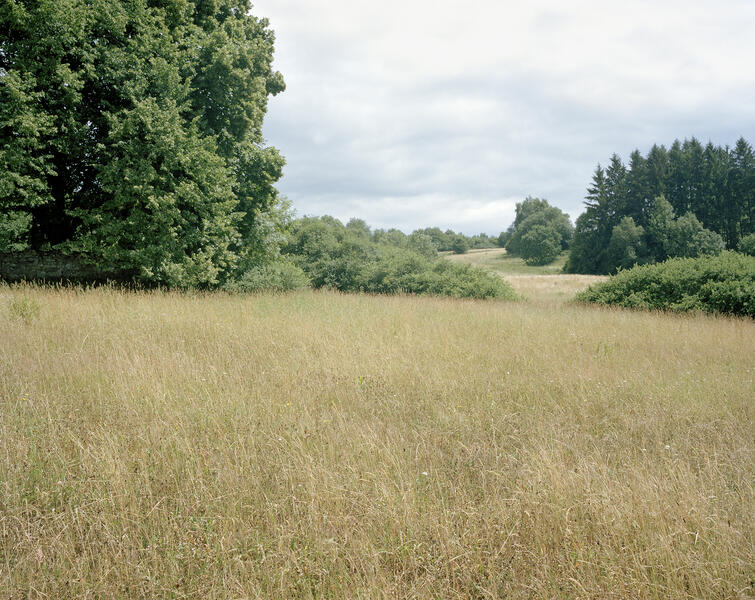 From Still...Life (Jistebnice)Digital Print from Medium Format Negative
From Still...Life (Jistebnice)Digital Print from Medium Format Negative -
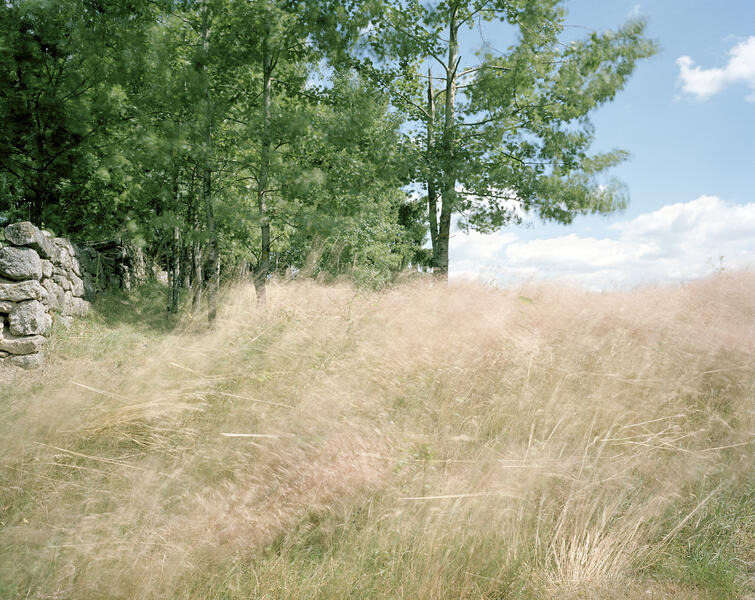 From Still...Life (Olsany)Digital Print from Medium Format Negative
From Still...Life (Olsany)Digital Print from Medium Format Negative -
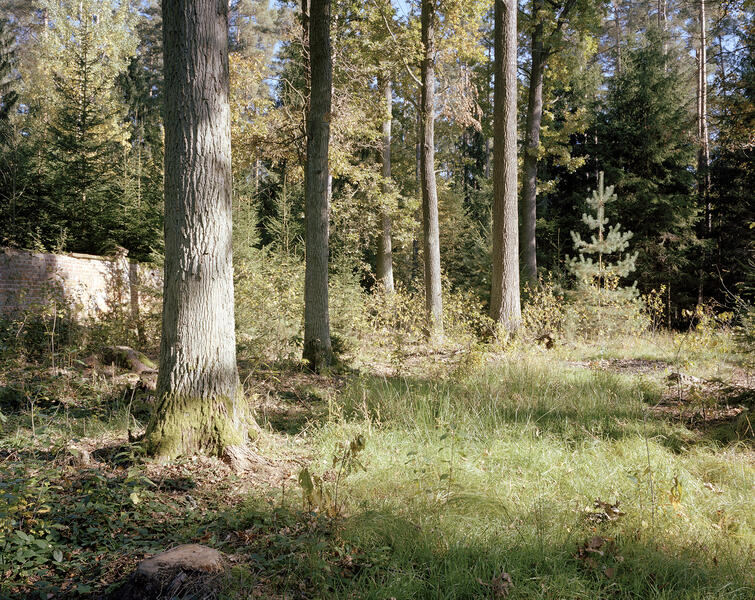 From Still...Life (Trebon)Digital Print from Medium Format Negative
From Still...Life (Trebon)Digital Print from Medium Format Negative -
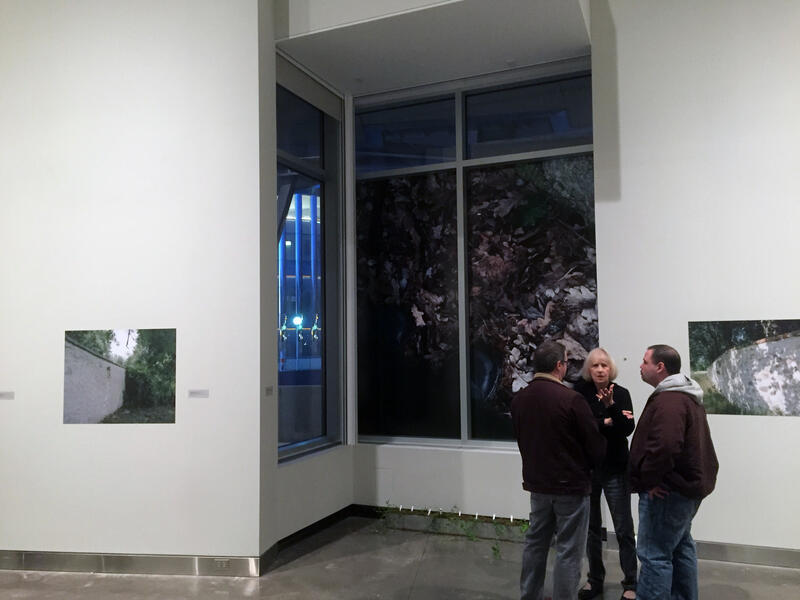 From Still...LifeInstallation View (North Wall - center window) Photographs with Vinca Plants
From Still...LifeInstallation View (North Wall - center window) Photographs with Vinca Plants -
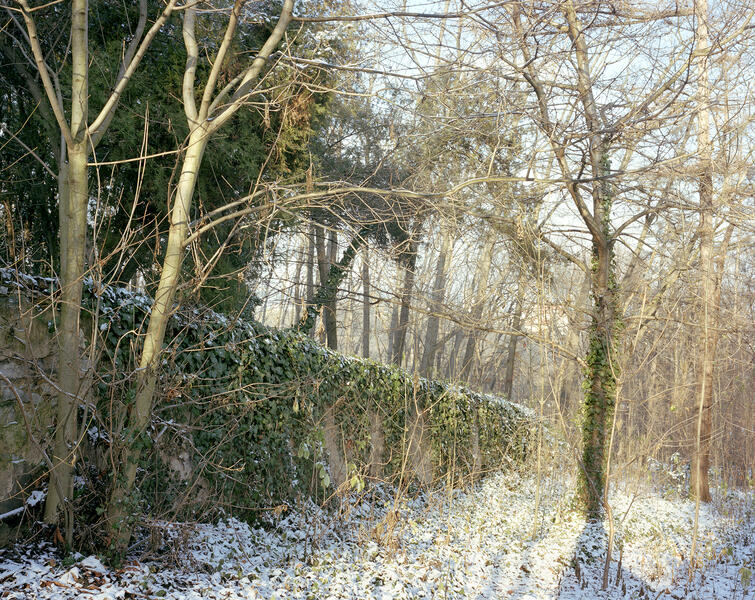 From Still...Life (Radlice)Digital Print from Medium Format Negative
From Still...Life (Radlice)Digital Print from Medium Format Negative -
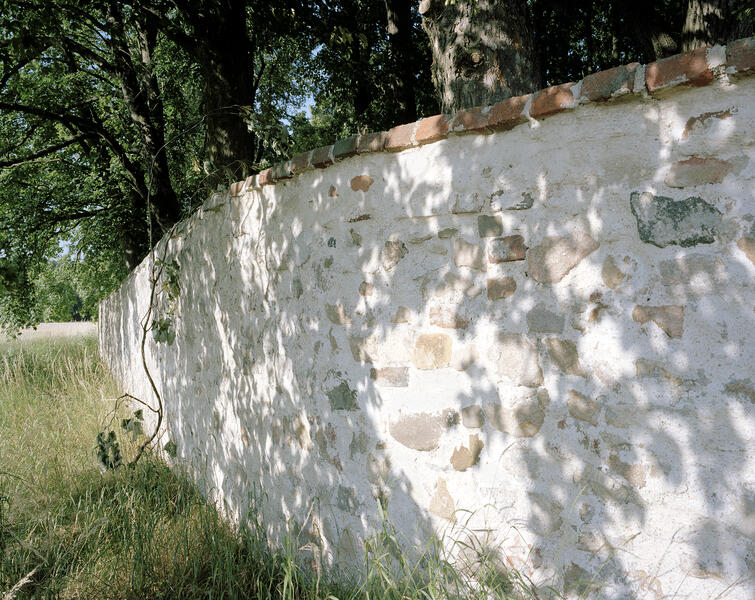 From Still...Life (Breznice)Digital Print from Medium Format Negative
From Still...Life (Breznice)Digital Print from Medium Format Negative -
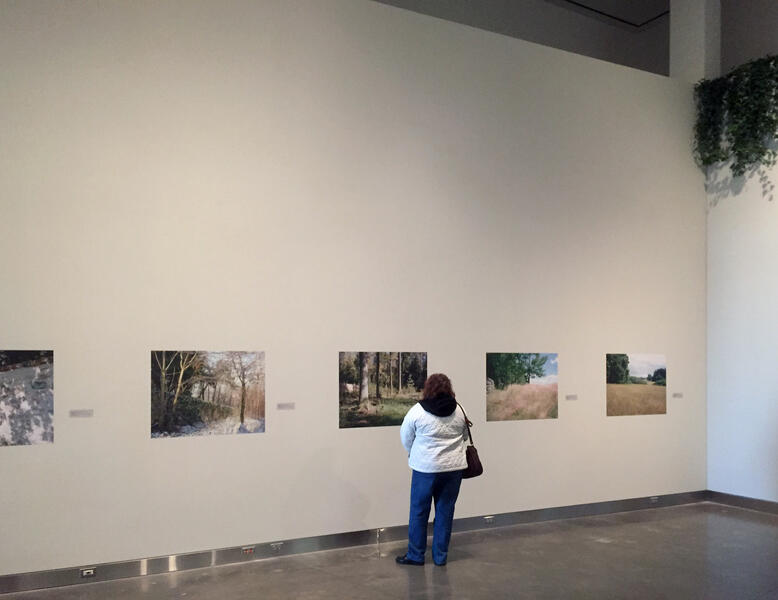 From Still...LifeInstallation View (North Wall - right side)
From Still...LifeInstallation View (North Wall - right side)
Still...Life (Part 1)
The Czech Republic is one of the richest countries with regard to Jewish sites and artifacts. Spared from major bombing during World War II, Prague and the surrounding countryside contain over three hundred buildings and burial sites, and represent the largest vestige of Jewish culture and heritage found in Central and Eastern Europe.
Neil Anderson, an Associate Professor in Horticultural Science at the University of Minnesota, and I met as Fulbright Scholars in the Czech Republic during 2010. Together with Neil’s husband, Mark Gilquist, we set out to explore a number of cemeteries during 2010-2011 (and later, just Lynn and Neil in 2015), each with their own particular agenda.
While Neil recorded the native, non-native and/or invasive plant species thriving in the cemeteries, I explored the periphery of these sites. The ubiquitous stone wall covered in ivy is a common feature that indicates the presence of a Jewish burial ground. What particularly struck me were the details of the environment found next to these walls including trees and fields, adjacent buildings, fences, signs, and roads.
The individual photographs should be viewed as part of a larger work. Coursing through the towns and countryside, the presence of these cemetery walls serves as a historical marker in the surrounding landscape.
In addition to my photographs, the exhibition also includes live plants and bulbs, Neil’s documentation of plant species, and several of Mark’s iPhone images.
Neil Anderson, an Associate Professor in Horticultural Science at the University of Minnesota, and I met as Fulbright Scholars in the Czech Republic during 2010. Together with Neil’s husband, Mark Gilquist, we set out to explore a number of cemeteries during 2010-2011 (and later, just Lynn and Neil in 2015), each with their own particular agenda.
While Neil recorded the native, non-native and/or invasive plant species thriving in the cemeteries, I explored the periphery of these sites. The ubiquitous stone wall covered in ivy is a common feature that indicates the presence of a Jewish burial ground. What particularly struck me were the details of the environment found next to these walls including trees and fields, adjacent buildings, fences, signs, and roads.
The individual photographs should be viewed as part of a larger work. Coursing through the towns and countryside, the presence of these cemetery walls serves as a historical marker in the surrounding landscape.
In addition to my photographs, the exhibition also includes live plants and bulbs, Neil’s documentation of plant species, and several of Mark’s iPhone images.
-
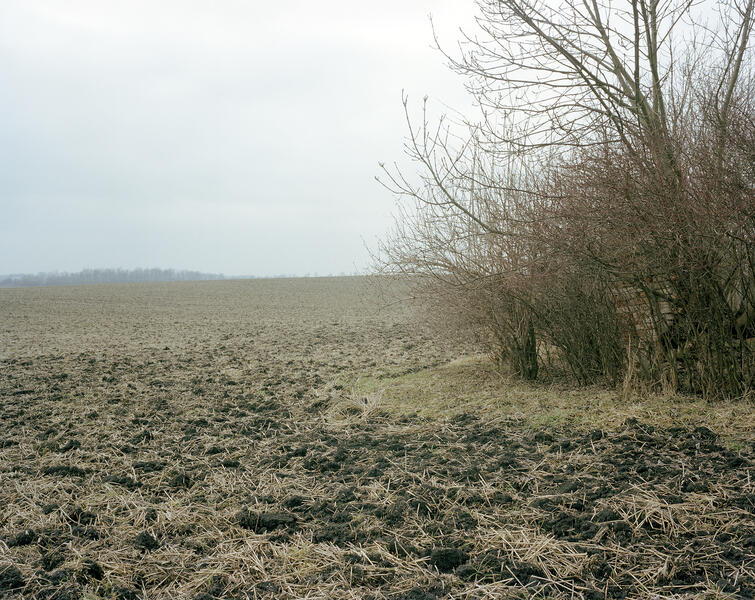 From Still...Life (Krinec)Digital Print from Medium Format Negative
From Still...Life (Krinec)Digital Print from Medium Format Negative -
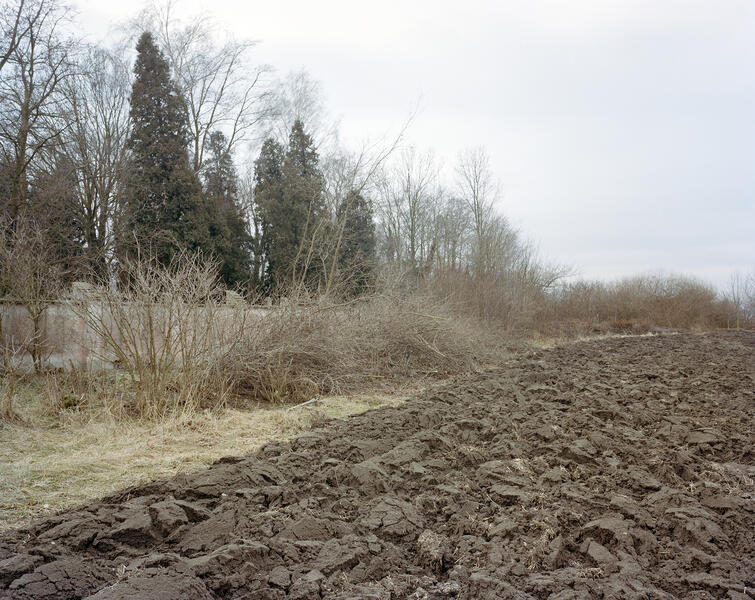 From Still...Life (Kovanice)Digital Print from Medium Format Negative
From Still...Life (Kovanice)Digital Print from Medium Format Negative -
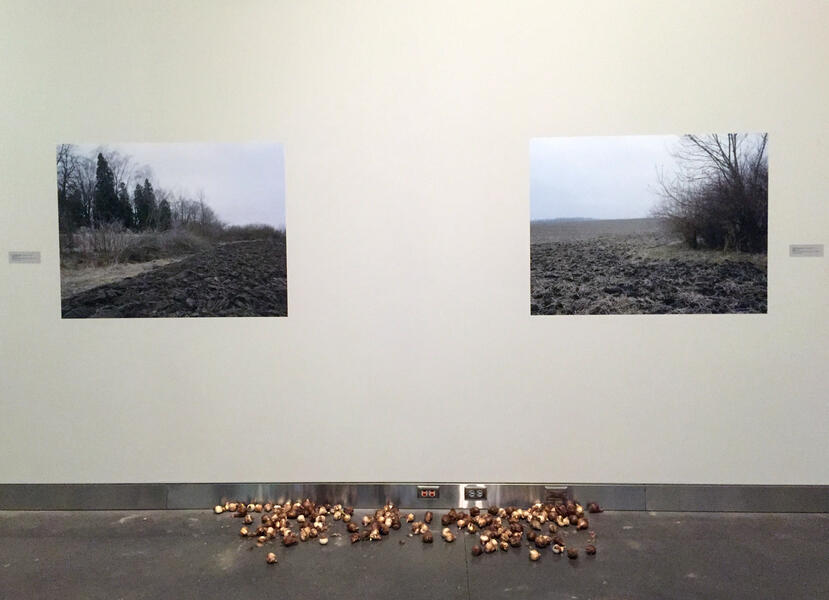 From Still...LifeInstallation View (West Wall) Diptych with bulbs
From Still...LifeInstallation View (West Wall) Diptych with bulbs -
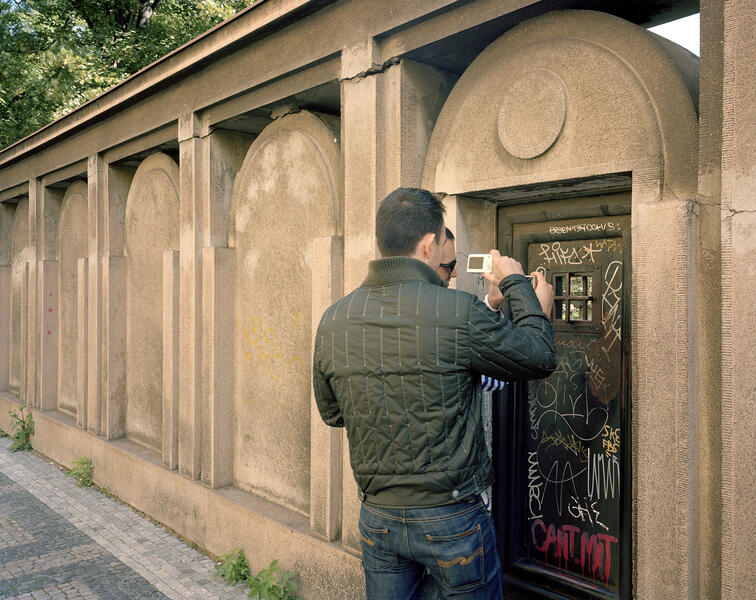 From Still...Life (Prague: Old Jewish Cemetery)Digital Print from Medium Format Negative
From Still...Life (Prague: Old Jewish Cemetery)Digital Print from Medium Format Negative -
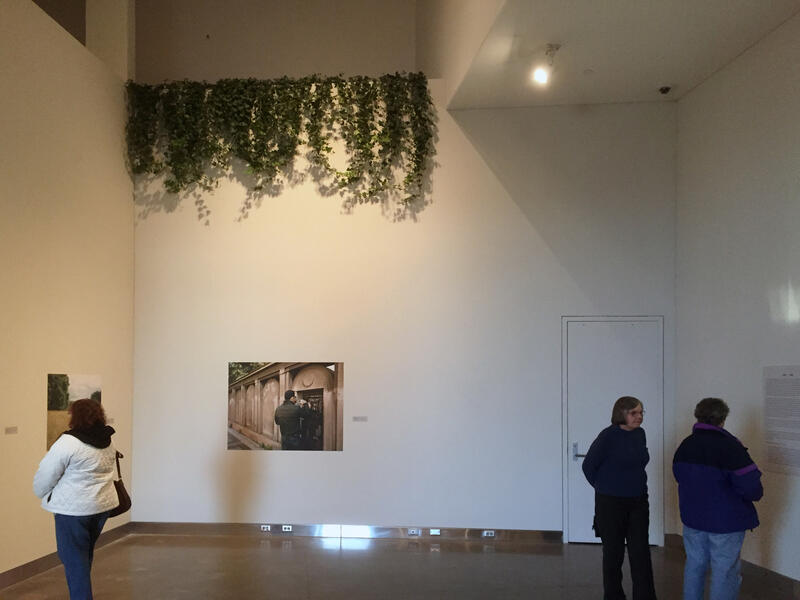 From Still...LifeInstallation View (East Wall) Photograph with Ivy
From Still...LifeInstallation View (East Wall) Photograph with Ivy -
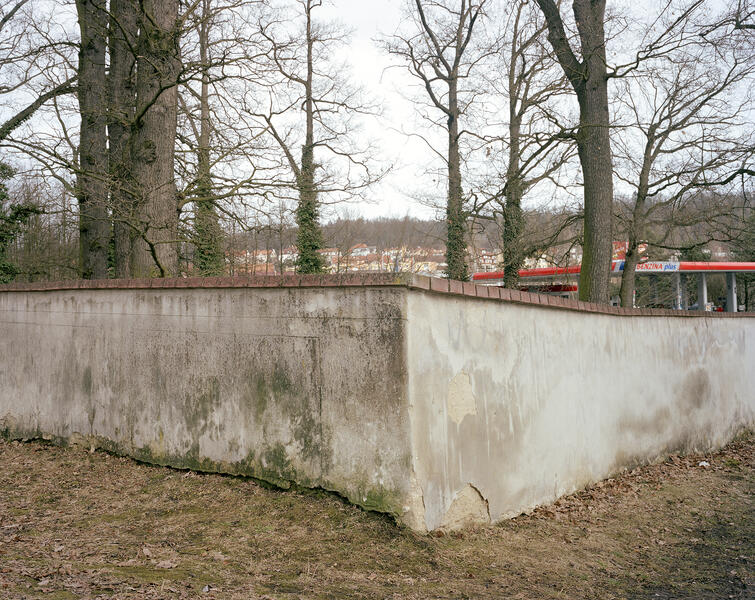 From Still...Life (Hluboka nad Vltavou)Digital Print from Medium Format Negative
From Still...Life (Hluboka nad Vltavou)Digital Print from Medium Format Negative -
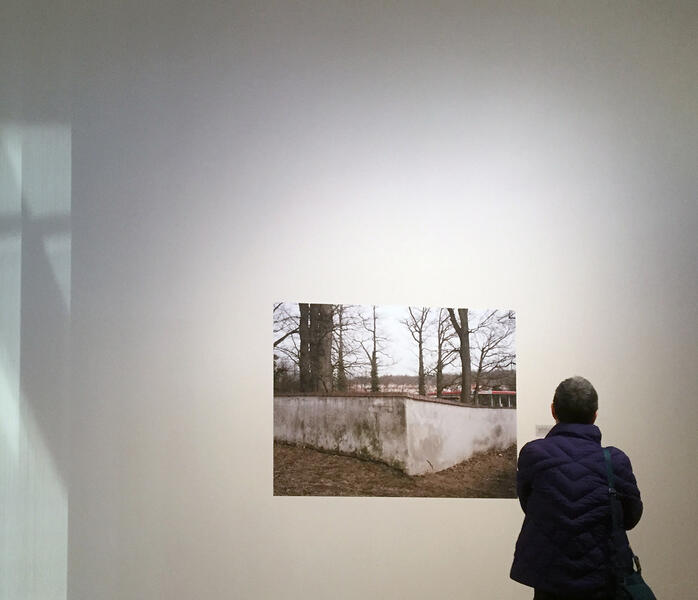 From Still...LifeInstallation View (South Wall)
From Still...LifeInstallation View (South Wall)
Relative Time (Part 1 - North)
As Simon Schama explored in Landscape and Memory, national identity and landscape have always been intertwined. For Americans, the incredible geographical diversity that one encounters throughout the country is an ongoing subject for artists and storytellers. My ambition is to photograph cemeteries in all fifty states, in both rural and urban settings. Withholding place names for the cemeteries allows for a greater range of associations. Indeed some of the cemeteries I photographed actually straddle national or state boundaries. Such political boundaries are subsumed by the continuity of the landscape.
Time can be felt in the quickly moving cars, trucks and trains, and in the condition of the fences surrounding the site as well as the age of trees located inside and outside the cemetery. As much as a gravestone commemorates the passing of an individual, when viewed against the backdrop of a diverse and ever-changing world, this very same headstone can also function as a commemorative marker for the land itself and the presence of human activity over time.
Time can be felt in the quickly moving cars, trucks and trains, and in the condition of the fences surrounding the site as well as the age of trees located inside and outside the cemetery. As much as a gravestone commemorates the passing of an individual, when viewed against the backdrop of a diverse and ever-changing world, this very same headstone can also function as a commemorative marker for the land itself and the presence of human activity over time.
-
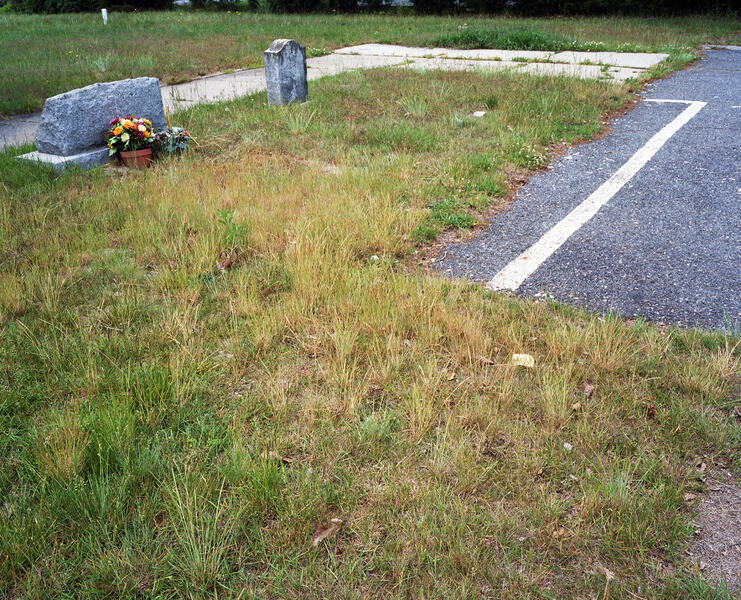 Relative Time 07.14.10Digital Print from Medium Format Negative
Relative Time 07.14.10Digital Print from Medium Format Negative -
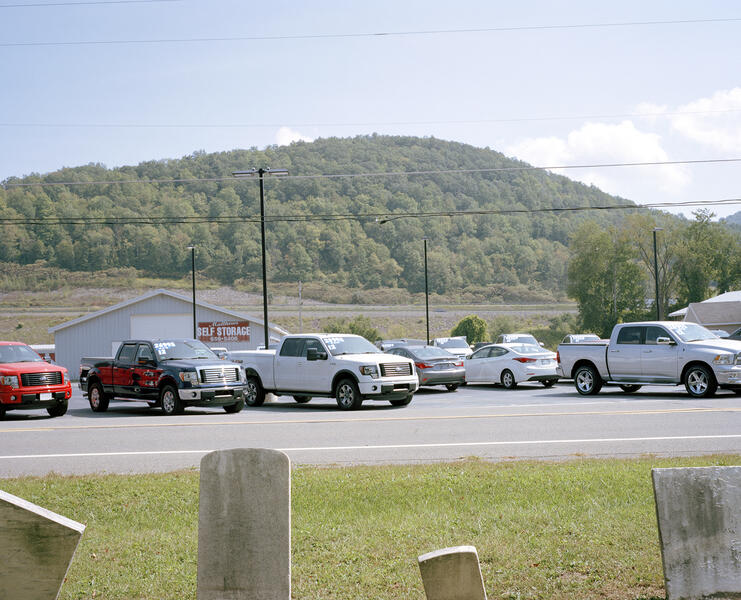 Relative Time 15.67.01Digital Print from Medium Format Negative
Relative Time 15.67.01Digital Print from Medium Format Negative -
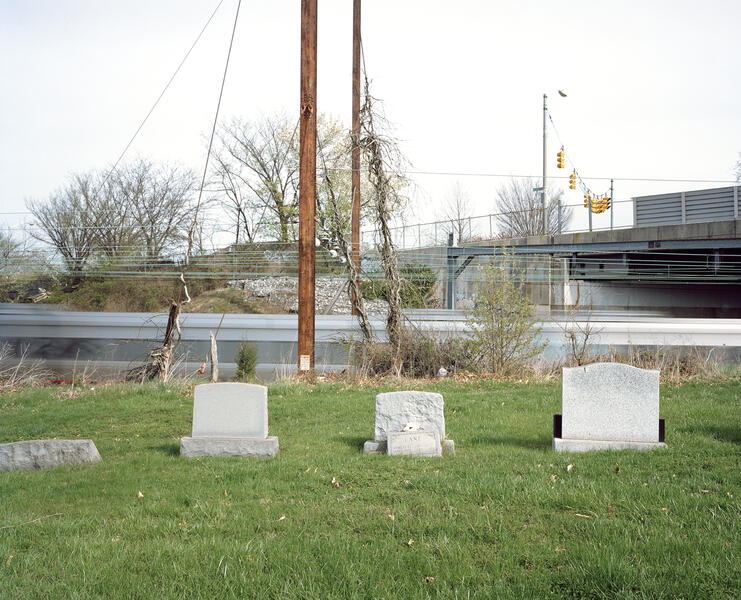 Relative Time 14.06.05Digital Print from Medium Format Negative
Relative Time 14.06.05Digital Print from Medium Format Negative -
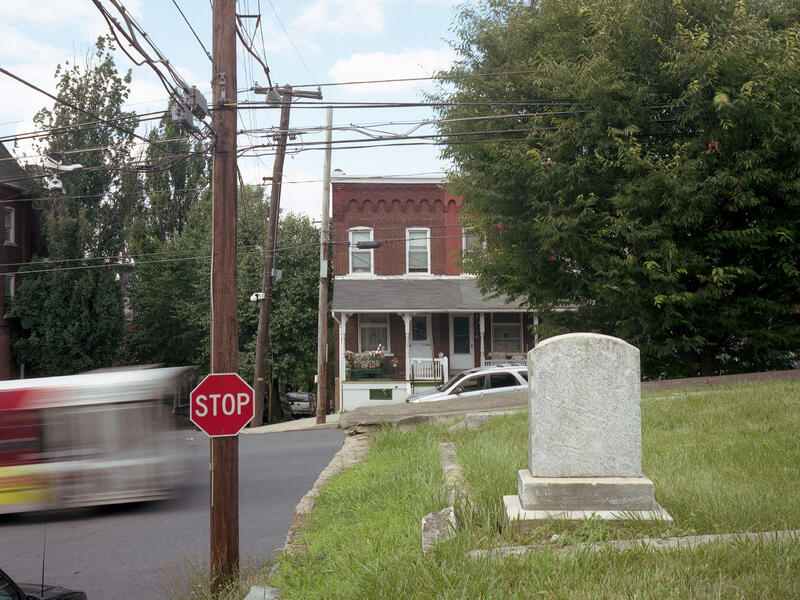 Relative Time 11.35.12Digital Print from Medium Format Negative
Relative Time 11.35.12Digital Print from Medium Format Negative -
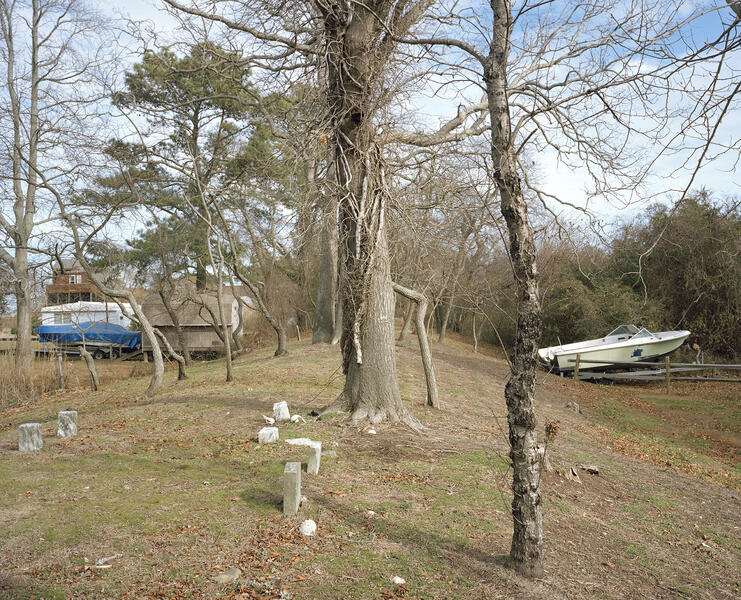 Relative Time 14.03.05Digital Print from Medium Format Negative
Relative Time 14.03.05Digital Print from Medium Format Negative -
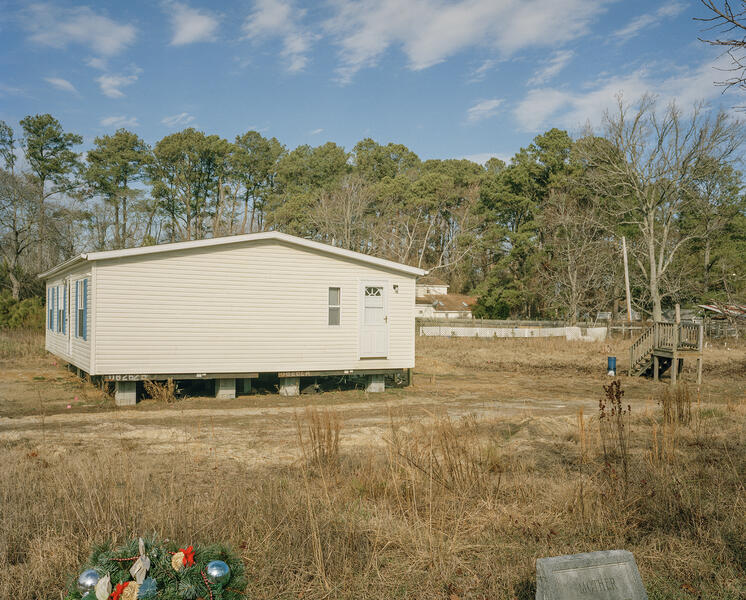 Relative Time 14.02.05Digital Print from Medium Format Negative
Relative Time 14.02.05Digital Print from Medium Format Negative -
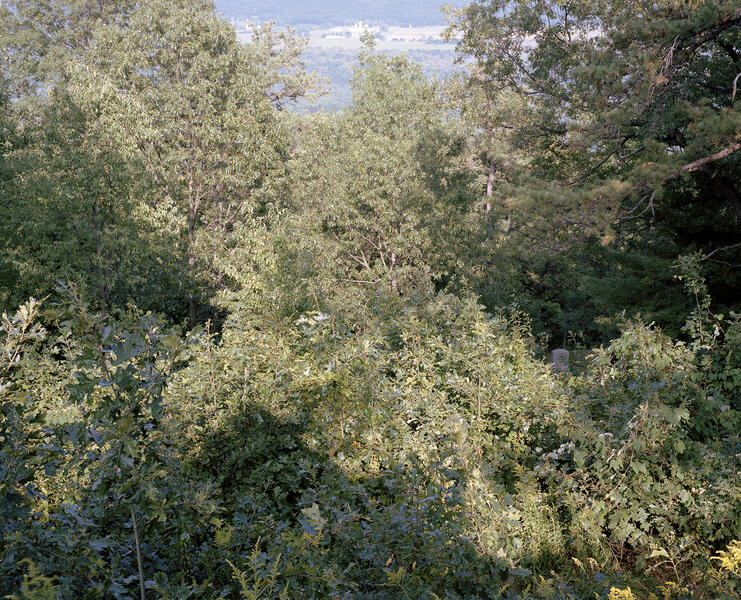 Relative Time 15.65.05Digital Print from Medium Format Negative
Relative Time 15.65.05Digital Print from Medium Format Negative -
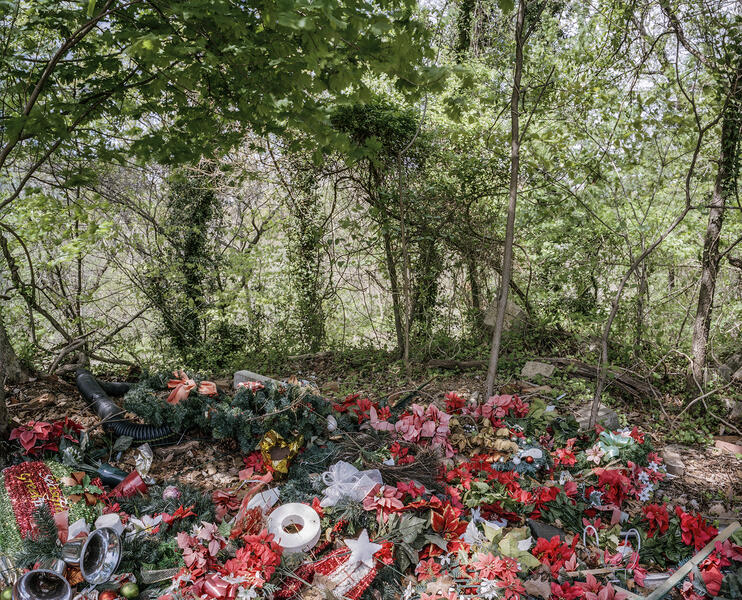 Relative Time 14.10.12Digital Print from Medium Format Negative
Relative Time 14.10.12Digital Print from Medium Format Negative
Still...Life (Part 2)
The Czech Republic is one of the richest countries with regard to Jewish sites and artifacts. Spared from major bombing during World War II, Prague and the surrounding countryside contain over three hundred buildings and burial sites, and represent the largest vestige of Jewish culture and heritage found in Central and Eastern Europe.
Neil Anderson, an Associate Professor in Horticultural Science at the University of Minnesota, and I met as Fulbright Scholars in the Czech Republic during 2010. Together with Neil’s husband, Mark Gilquist, we set out to explore a number of cemeteries during 2010-2011 (and later, just Lynn and Neil in 2015), each with their own particular agenda.
While Neil recorded the native, non-native and/or invasive plant species thriving in the cemeteries, I explored the periphery of these sites. The ubiquitous stone wall covered in ivy is a common feature that indicates the presence of a Jewish burial ground. What particularly struck me were the details of the environment found next to these walls including trees and fields, adjacent buildings, fences, signs, and roads.
The individual photographs should be viewed as part of a larger work. Coursing through the towns and countryside, the presence of these cemetery walls serves as a historical marker in the surrounding landscape.
In addition to my photographs, the exhibition also includes live plants and bulbs, Neil’s documentation of plant species, and several of Mark’s iPhone images.
Neil Anderson, an Associate Professor in Horticultural Science at the University of Minnesota, and I met as Fulbright Scholars in the Czech Republic during 2010. Together with Neil’s husband, Mark Gilquist, we set out to explore a number of cemeteries during 2010-2011 (and later, just Lynn and Neil in 2015), each with their own particular agenda.
While Neil recorded the native, non-native and/or invasive plant species thriving in the cemeteries, I explored the periphery of these sites. The ubiquitous stone wall covered in ivy is a common feature that indicates the presence of a Jewish burial ground. What particularly struck me were the details of the environment found next to these walls including trees and fields, adjacent buildings, fences, signs, and roads.
The individual photographs should be viewed as part of a larger work. Coursing through the towns and countryside, the presence of these cemetery walls serves as a historical marker in the surrounding landscape.
In addition to my photographs, the exhibition also includes live plants and bulbs, Neil’s documentation of plant species, and several of Mark’s iPhone images.
-
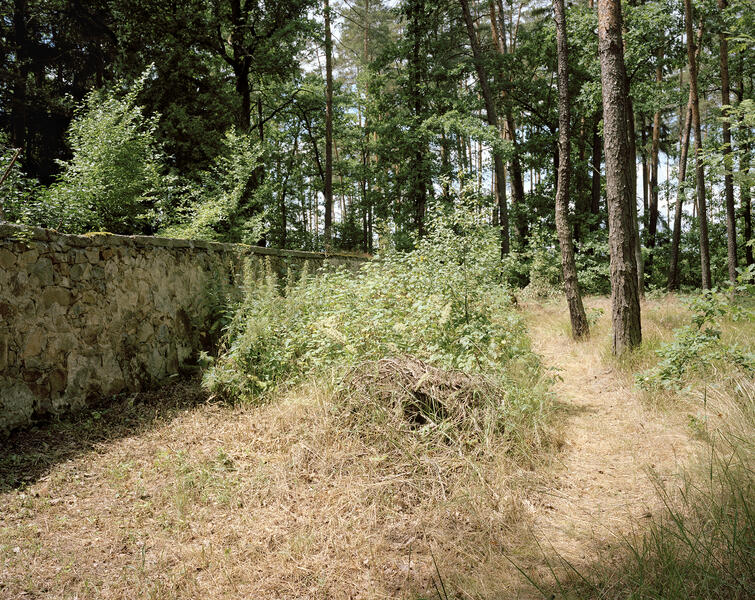 From Still...Life (Straz nad Nezarkou)Digital Print from Medium Format Negative
From Still...Life (Straz nad Nezarkou)Digital Print from Medium Format Negative -
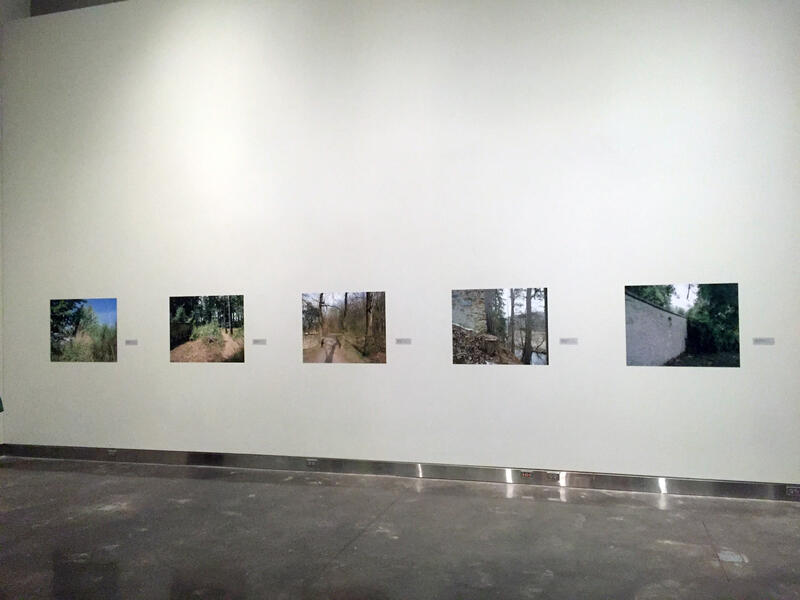 From Still...LifeInstallation View (North Wall - left side)
From Still...LifeInstallation View (North Wall - left side) -
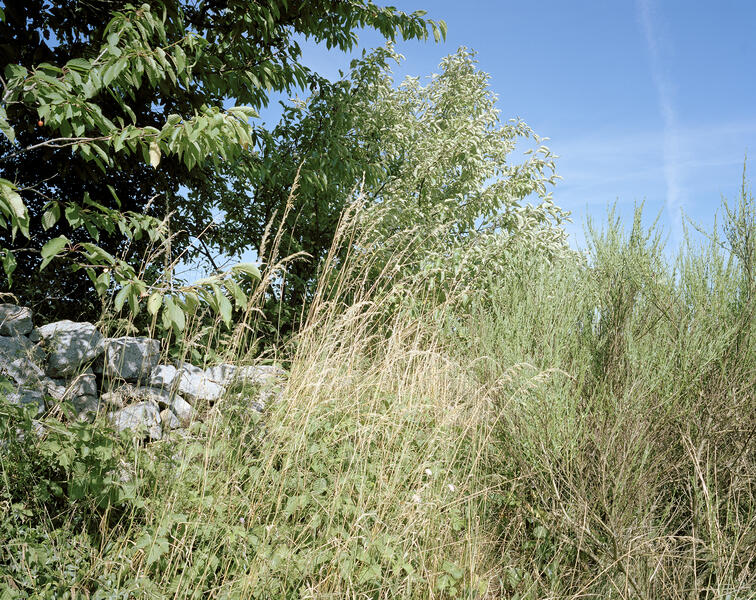 From Still...Life (Dolni Bolikov)Digital Print from Medium Format Negative
From Still...Life (Dolni Bolikov)Digital Print from Medium Format Negative -
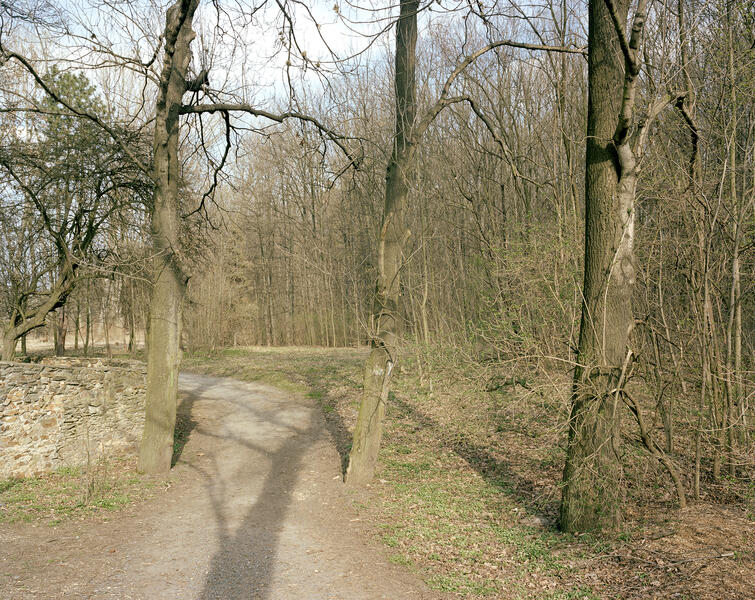 From Still...Life (Uhrineves)Digital Print from Medium Format Negative
From Still...Life (Uhrineves)Digital Print from Medium Format Negative -
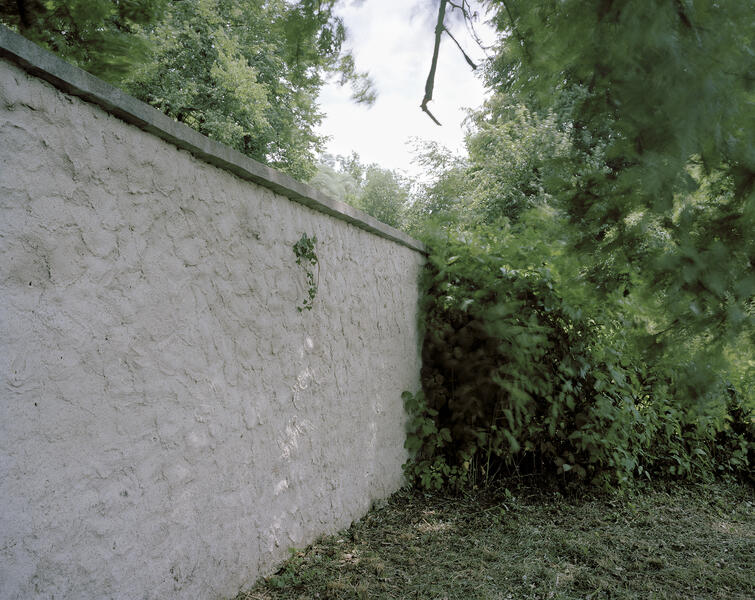 From Still...Life (Kolodeje nad LuziciDigital Print from Medium Format Negative
From Still...Life (Kolodeje nad LuziciDigital Print from Medium Format Negative -
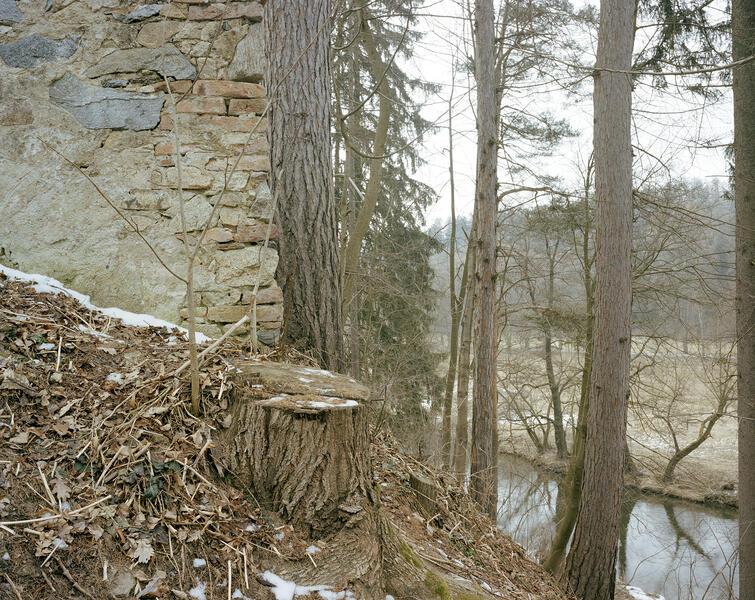 From Still...Life (Jindrichuv Hradec)Digital Print from Medium Format Negative
From Still...Life (Jindrichuv Hradec)Digital Print from Medium Format Negative
Relative Time (Part 2 - South)
As Simon Schama explored in Landscape and Memory, national identity and landscape have always been intertwined. For Americans, the incredible geographical diversity that one encounters throughout the country is an ongoing subject for artists and storytellers. My ambition is to photograph cemeteries in all fifty states, in both rural and urban settings. Withholding place names for the cemeteries allows for a greater range of associations. Indeed some of the cemeteries I photographed actually straddle national or state boundaries. Such political boundaries are subsumed by the continuity of the landscape.
Time can be felt in the quickly moving cars, trucks and trains, and in the condition of the fences surrounding the site as well as the age of trees located inside and outside the cemetery. As much as a gravestone commemorates the passing of an individual, when viewed against the backdrop of a diverse and ever-changing world, this very same headstone can also function as a commemorative marker for the land itself and the presence of human activity over time.
Time can be felt in the quickly moving cars, trucks and trains, and in the condition of the fences surrounding the site as well as the age of trees located inside and outside the cemetery. As much as a gravestone commemorates the passing of an individual, when viewed against the backdrop of a diverse and ever-changing world, this very same headstone can also function as a commemorative marker for the land itself and the presence of human activity over time.
-
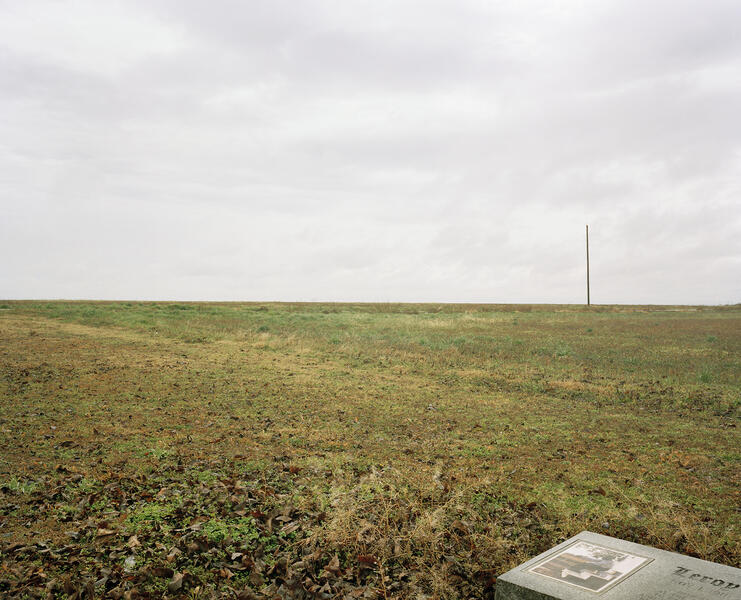 Relative Time 13.09.02Digital Print from Medium Format Negative
Relative Time 13.09.02Digital Print from Medium Format Negative -
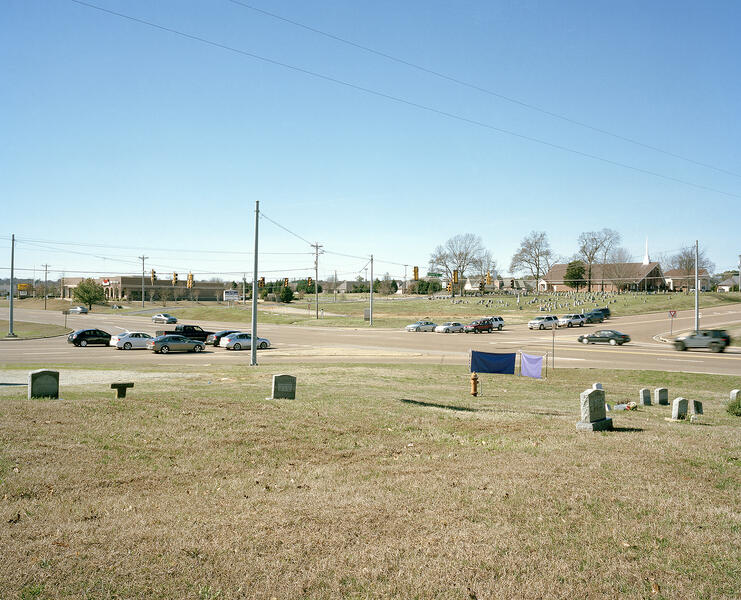 Relative Time 15.32.12Digital Print from Medium Format Negative
Relative Time 15.32.12Digital Print from Medium Format Negative -
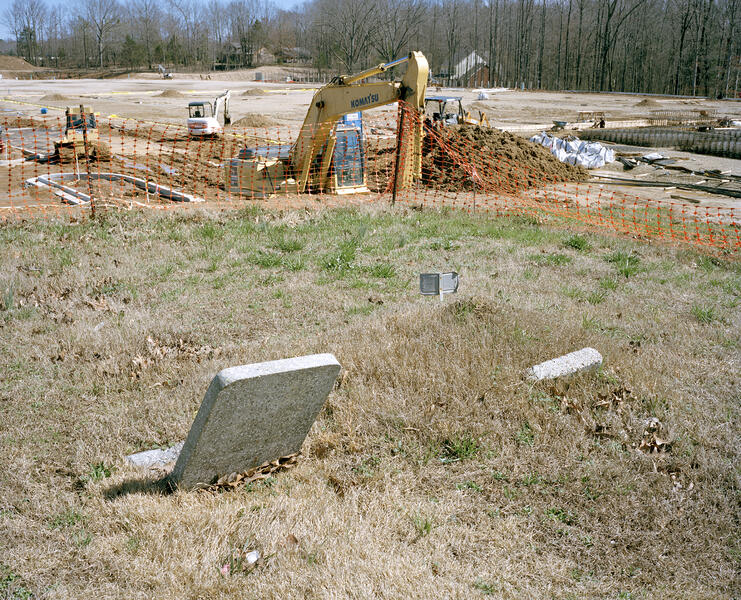 Relative Time 15.31.11Digital Print from Medium Format Negative
Relative Time 15.31.11Digital Print from Medium Format Negative -
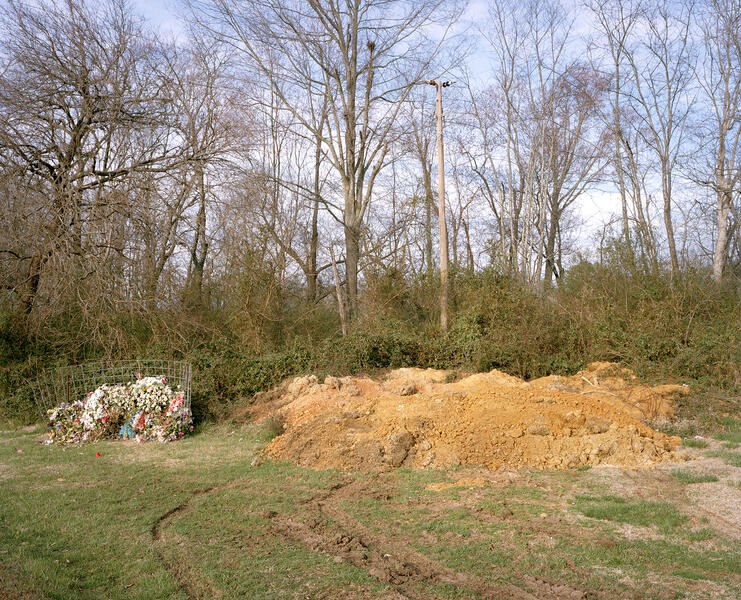 Relative Time 15.42.08Digital Print from Medium Format Negative
Relative Time 15.42.08Digital Print from Medium Format Negative -
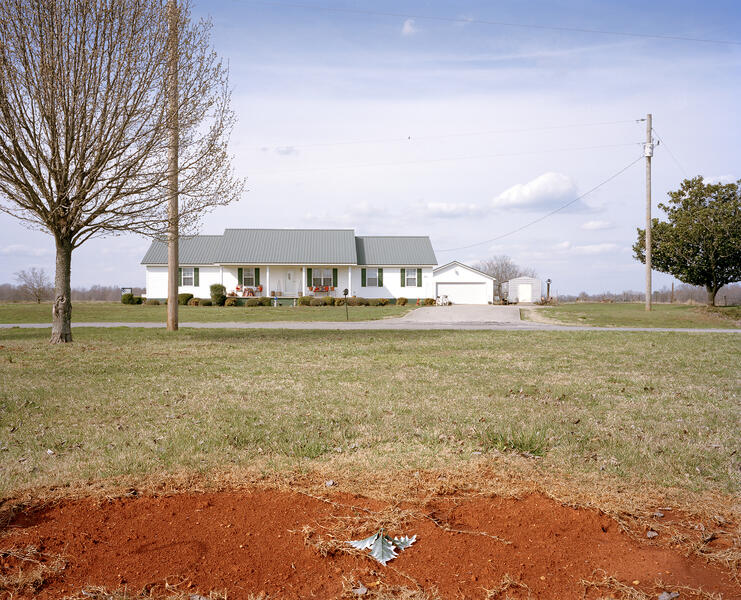 Relative Time 15.39.04Digital Print from Medium Format Negative
Relative Time 15.39.04Digital Print from Medium Format Negative -
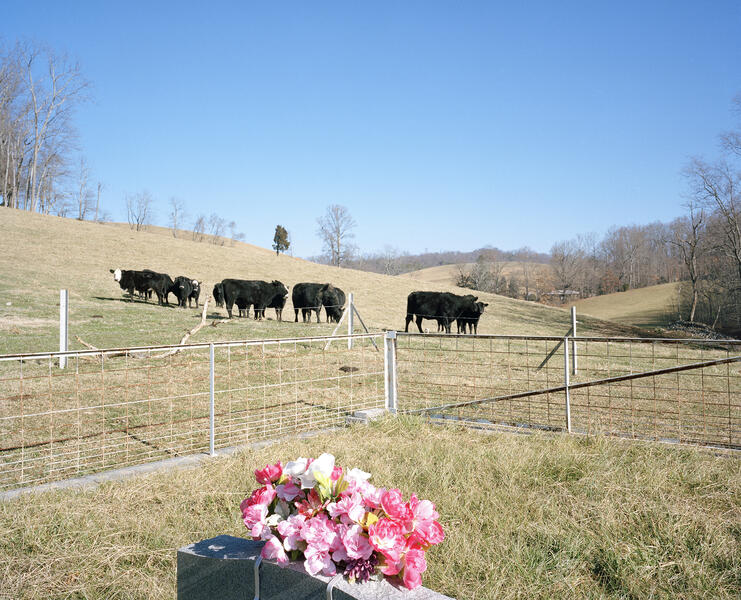 Relative Time 13.05.02Digital Print from Medium Format Negative
Relative Time 13.05.02Digital Print from Medium Format Negative -
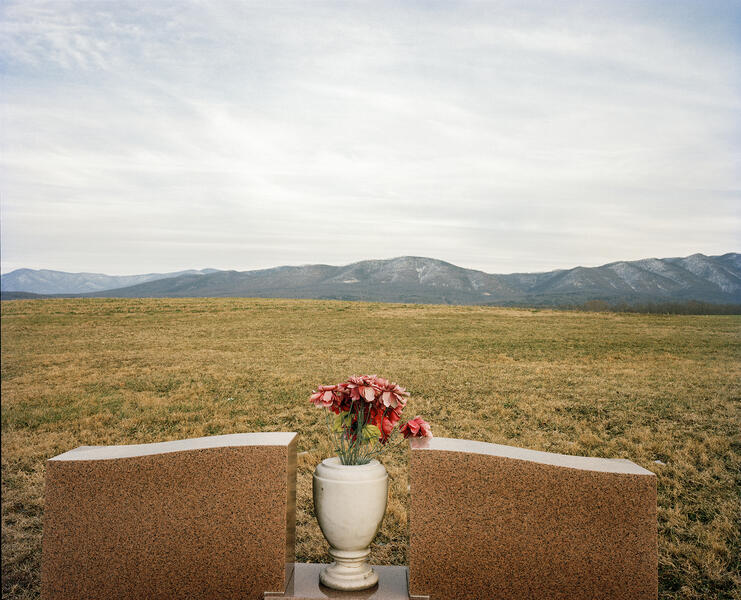 Relative Time 13.02.06Digital Print from Medium Format Negative
Relative Time 13.02.06Digital Print from Medium Format Negative -
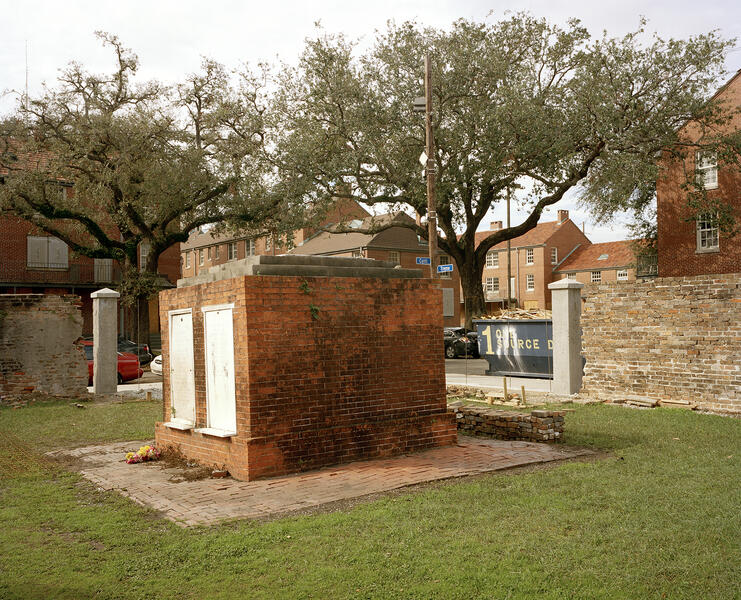 Relative Time 13.21.06Digital Print from Medium Format Negative
Relative Time 13.21.06Digital Print from Medium Format Negative
Relative Time (Part 3 - Midwest)
As Simon Schama explored in Landscape and Memory, national identity and landscape have always been intertwined. For Americans, the incredible geographical diversity that one encounters throughout the country is an ongoing subject for artists and storytellers. My ambition is to photograph cemeteries in all fifty states, in both rural and urban settings. Withholding place names for the cemeteries allows for a greater range of associations. Indeed some of the cemeteries I photographed actually straddle national or state boundaries. Such political boundaries are subsumed by the continuity of the landscape.
Time can be felt in the quickly moving cars, trucks and trains, and in the condition of the fences surrounding the site as well as the age of trees located inside and outside the cemetery. As much as a gravestone commemorates the passing of an individual, when viewed against the backdrop of a diverse and ever-changing world, this very same headstone can also function as a commemorative marker for the land itself and the presence of human activity over time.
Time can be felt in the quickly moving cars, trucks and trains, and in the condition of the fences surrounding the site as well as the age of trees located inside and outside the cemetery. As much as a gravestone commemorates the passing of an individual, when viewed against the backdrop of a diverse and ever-changing world, this very same headstone can also function as a commemorative marker for the land itself and the presence of human activity over time.
-
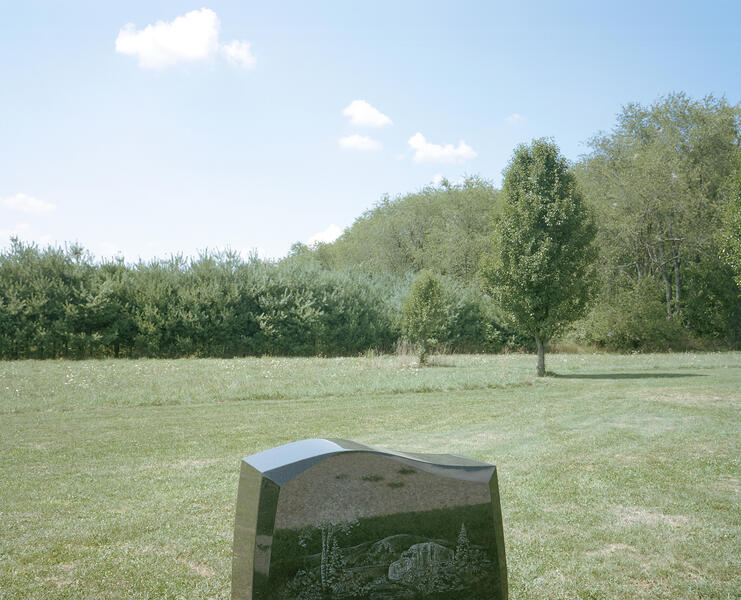 Relative Time 12.18.08Digital Print from Medium Format Negative
Relative Time 12.18.08Digital Print from Medium Format Negative -
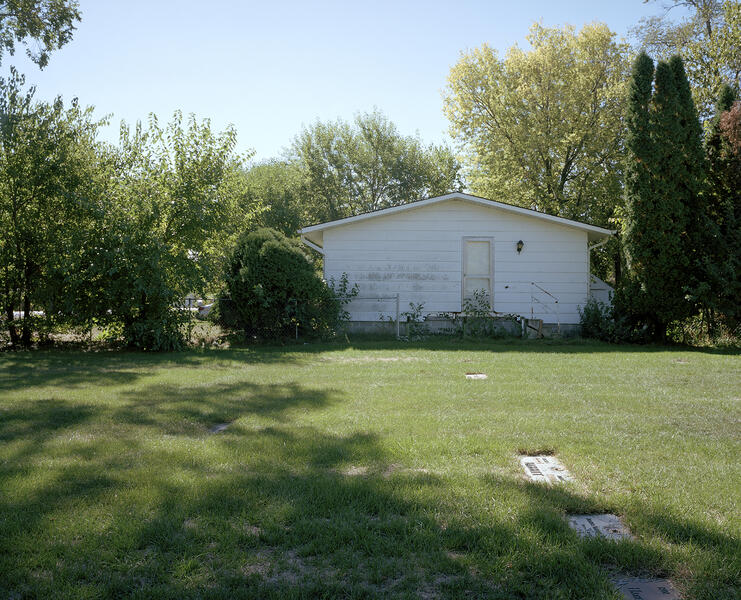 Relative Time 12.61.10Digital Print from Medium Format Negative
Relative Time 12.61.10Digital Print from Medium Format Negative -
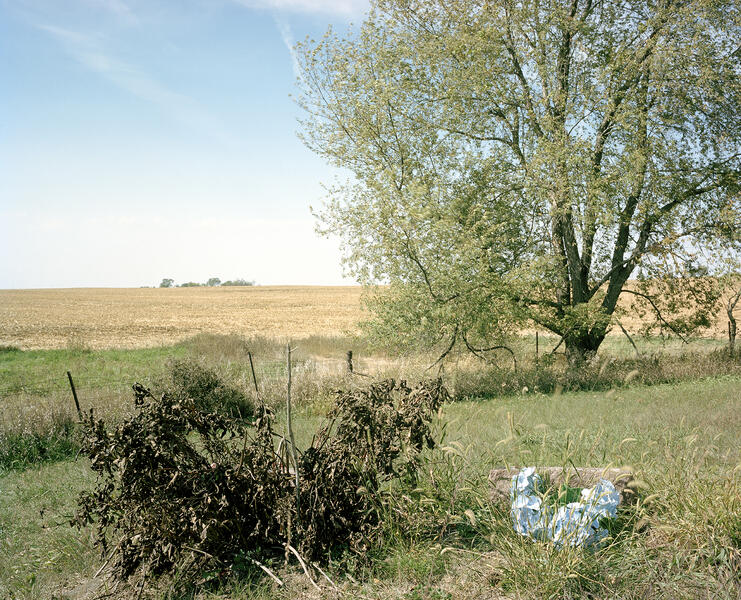 Relative Time 12.60.10Digital Print from Medium Format Negative
Relative Time 12.60.10Digital Print from Medium Format Negative -
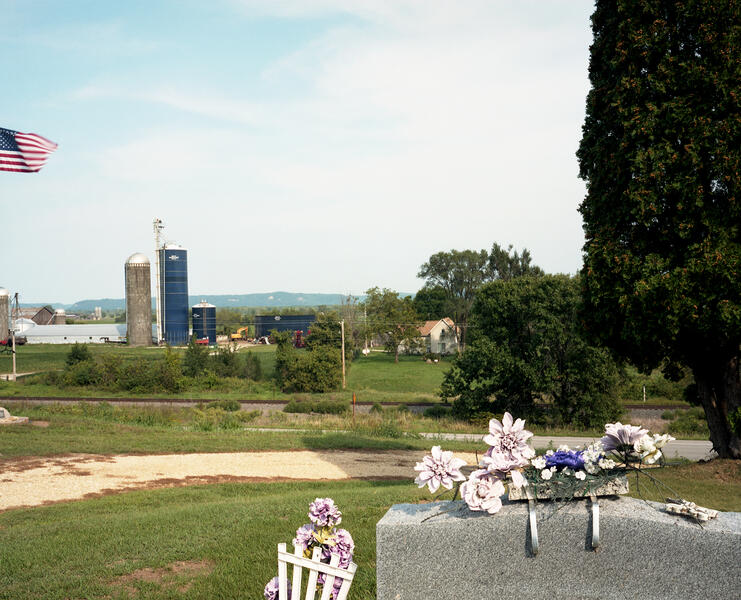 Relative Time 12.24.12Digital Print from Medium Format Negative
Relative Time 12.24.12Digital Print from Medium Format Negative -
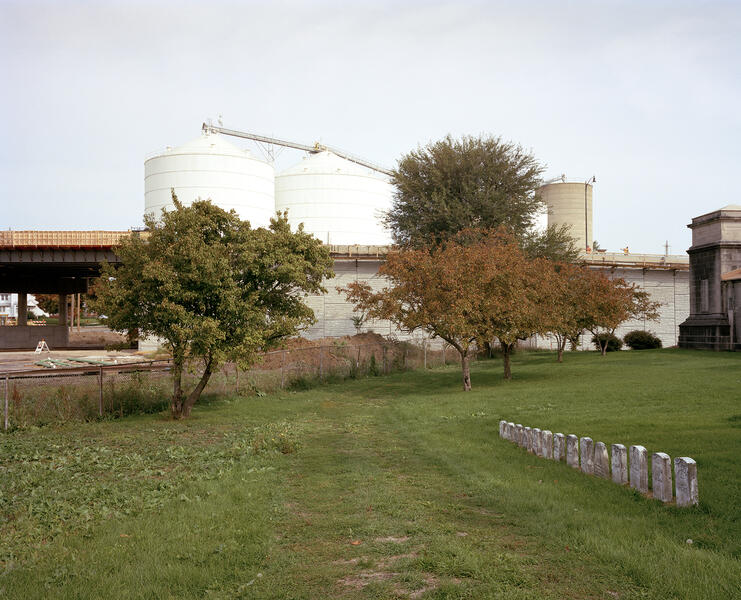 Relative Time 12.64.03Digital Print from Medium Format Negative
Relative Time 12.64.03Digital Print from Medium Format Negative -
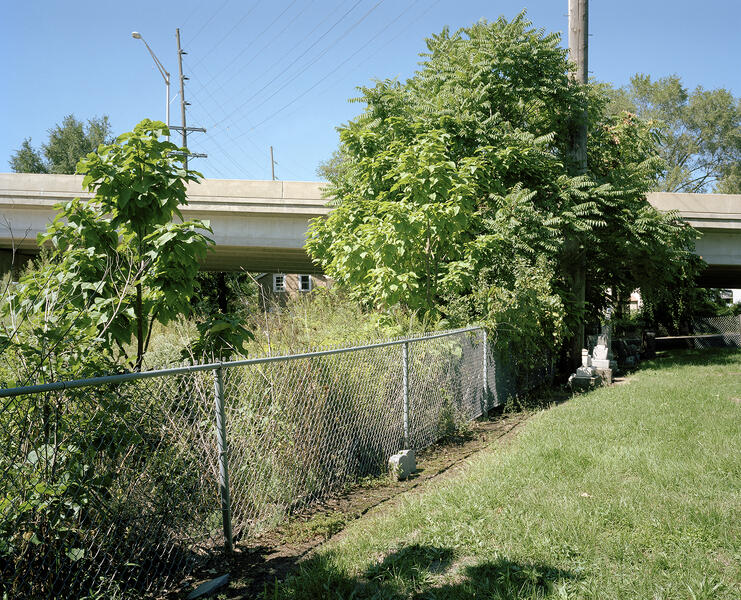 Relative Time 12.21.10Digital Print from Medium Format Negative
Relative Time 12.21.10Digital Print from Medium Format Negative -
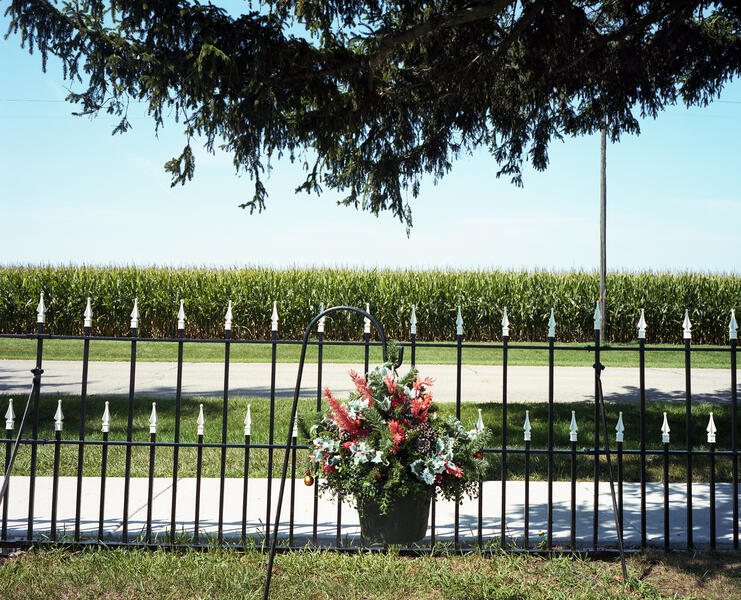 Relative Time 12.22.08Digital Print from Medium Format Negative
Relative Time 12.22.08Digital Print from Medium Format Negative -
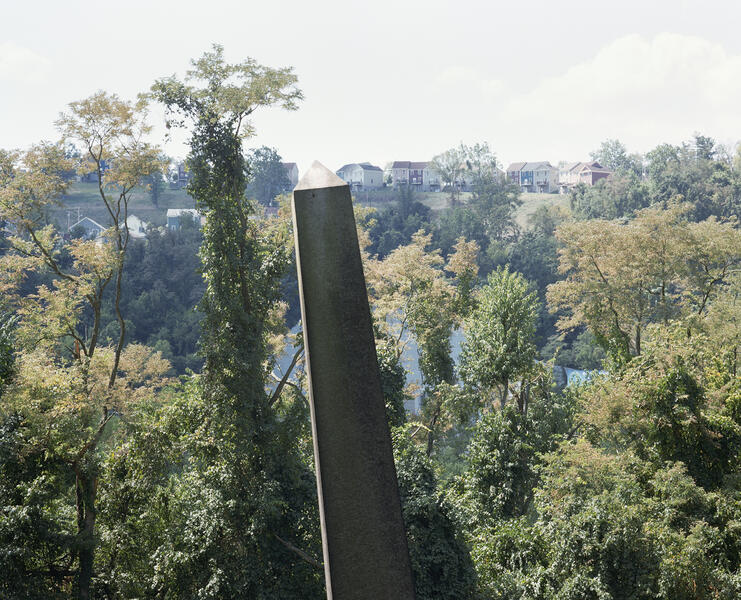 Relative Time 12.15.12Digital Print from Medium Format Negative
Relative Time 12.15.12Digital Print from Medium Format Negative
Relative Time (Part 1 - West)
As Simon Schama explored in Landscape and Memory, national identity and landscape have always been intertwined. For Americans, the incredible geographical diversity that one encounters throughout the country is an ongoing subject for artists and storytellers. My ambition is to photograph cemeteries in all fifty states, in both rural and urban settings. Withholding place names for the cemeteries allows for a greater range of associations. Indeed some of the cemeteries I photographed actually straddle national or state boundaries. Such political boundaries are subsumed by the continuity of the landscape.
Time can be felt in the quickly moving cars, trucks and trains, and in the condition of the fences surrounding the site as well as the age of trees located inside and outside the cemetery. As much as a gravestone commemorates the passing of an individual, when viewed against the backdrop of a diverse and ever-changing world, this very same headstone can also function as a commemorative marker for the land itself and the presence of human activity over time.
Time can be felt in the quickly moving cars, trucks and trains, and in the condition of the fences surrounding the site as well as the age of trees located inside and outside the cemetery. As much as a gravestone commemorates the passing of an individual, when viewed against the backdrop of a diverse and ever-changing world, this very same headstone can also function as a commemorative marker for the land itself and the presence of human activity over time.
-
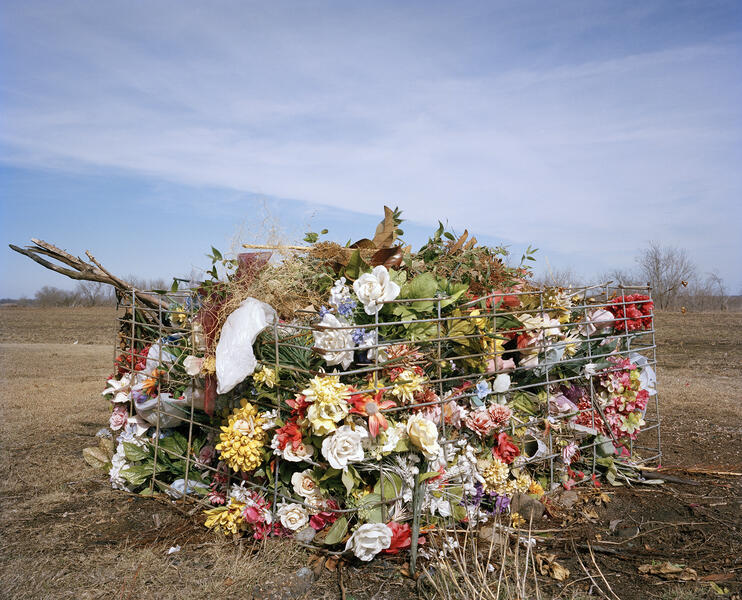 Relative Time 13.13.02Digital Print from Medium Format Negative
Relative Time 13.13.02Digital Print from Medium Format Negative -
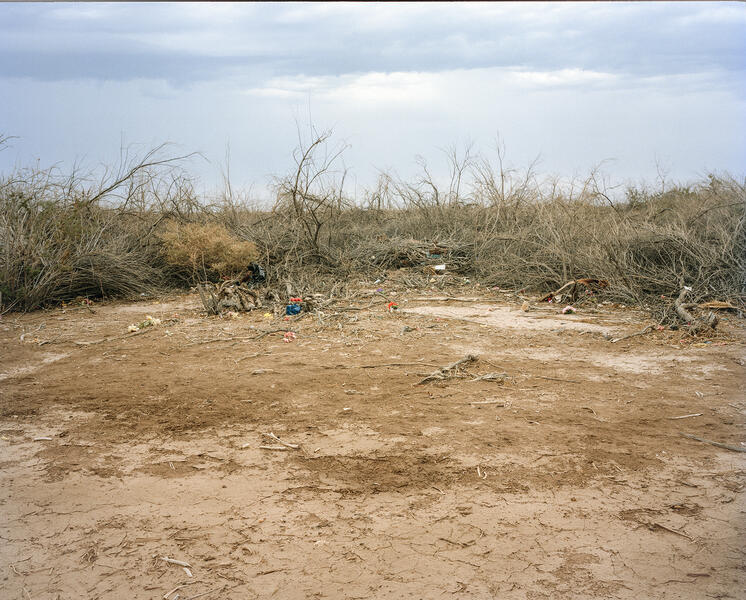 Relative Time 14.15.08Digital Print from Medium Format Negative
Relative Time 14.15.08Digital Print from Medium Format Negative -
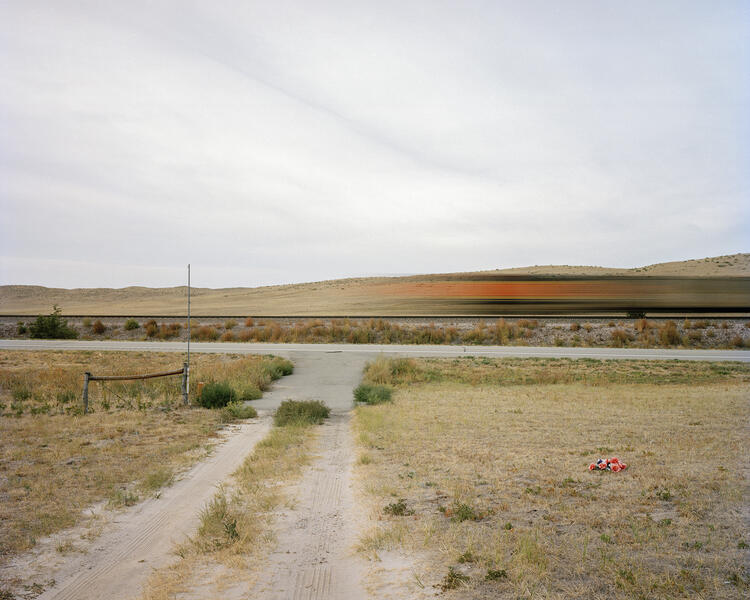 Relative Time 12.56.08Digital Print from Medium Format Negative
Relative Time 12.56.08Digital Print from Medium Format Negative -
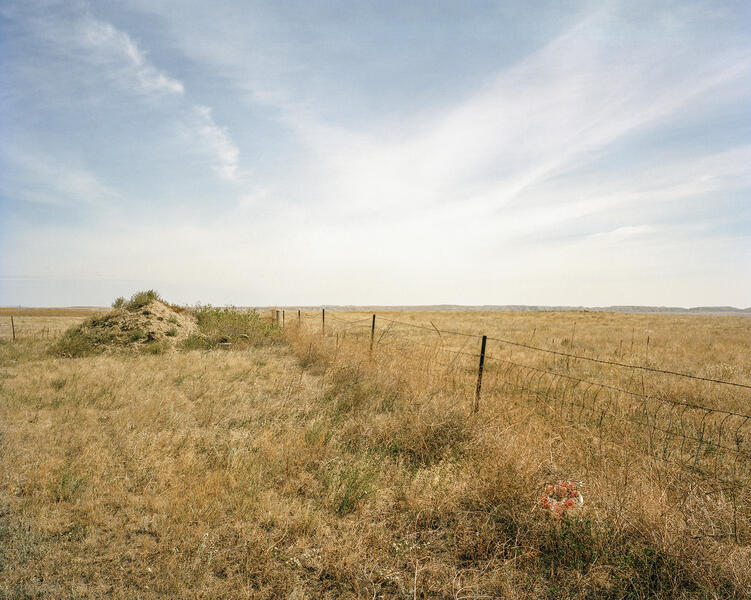 Relative Time 12.54.12Digital Print from Medium Format Negative
Relative Time 12.54.12Digital Print from Medium Format Negative -
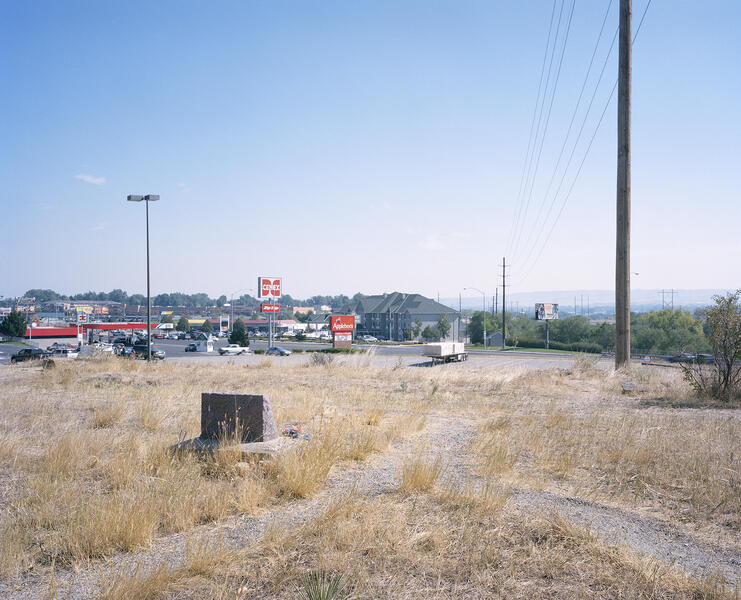 Relative Time 12.41.10Digital Print from Medium Format Negative
Relative Time 12.41.10Digital Print from Medium Format Negative -
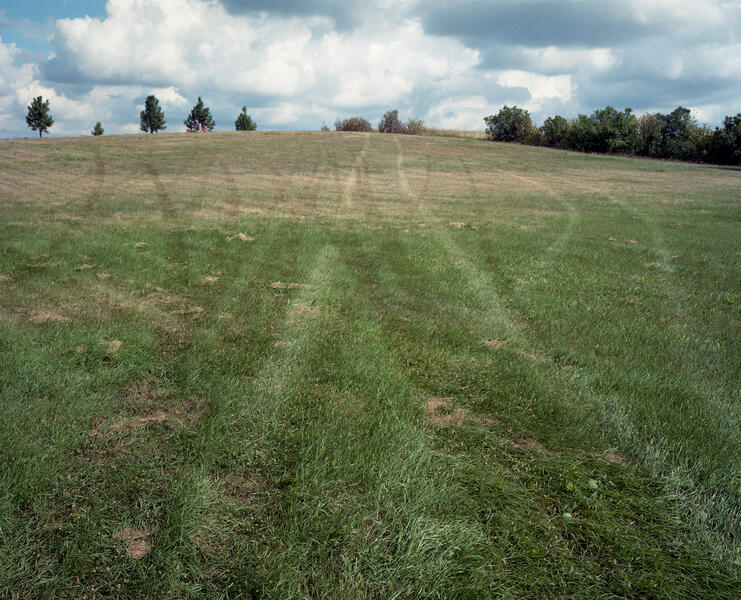 Relative Time 12.32.01
Relative Time 12.32.01 -
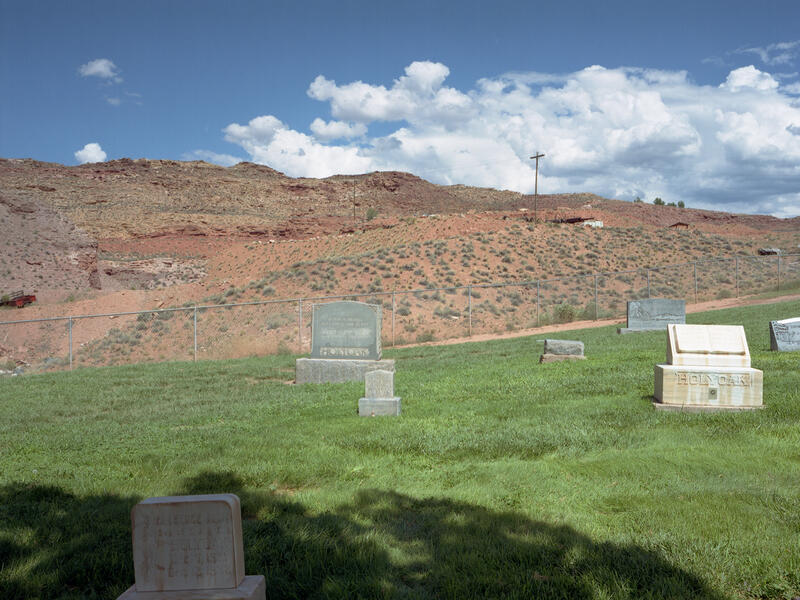 Relative Time 11.43.05Digital Print from Medium Format Negative
Relative Time 11.43.05Digital Print from Medium Format Negative -
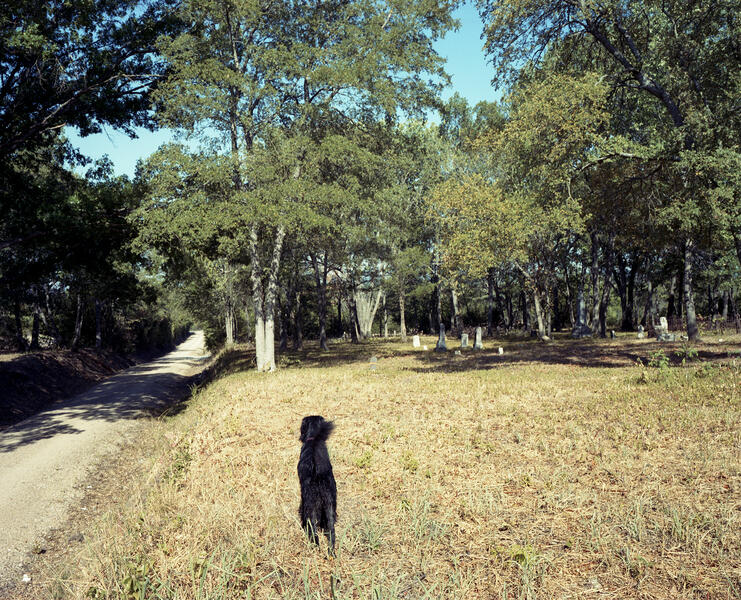 Relative Time 06.03.03Digital Print from Medium Format Negative
Relative Time 06.03.03Digital Print from Medium Format Negative
Scatter
For over a decade, I have been photographing cemeteries across the US and the Czech Republic. The landscapes surrounding these burial grounds are of particular interest to me. Another aspect of this project is exploring the places that people choose to have their ashes scattered. In regard to the issues of time and claiming a parcel of land, the scattering of ashes marks the presence of someone in a very transient way, in contrast to a more permanent headstone.




















































